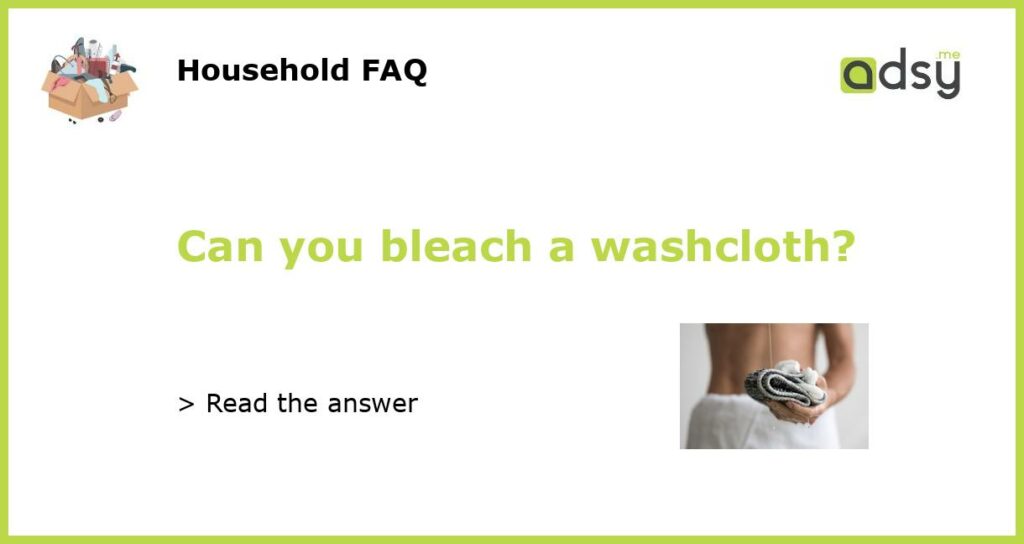Can You Bleach a Washcloth?
Understanding the Effects of Bleaching on Washcloths
Bleach is a commonly used cleaning agent that is known for its strong whitening and disinfecting properties. Many people use bleach to remove stains and brighten their laundry, including washcloths. But, can you bleach a washcloth without damaging it? In this article, we will explore the effects of bleach on washcloths and provide some tips for bleaching them effectively.
The Pros and Cons of Bleaching Washcloths
Bleaching a washcloth can have both positive and negative effects. On the positive side, bleach is excellent for removing tough stains, such as makeup, dirt, and sweat, from washcloths. It can also help to restore the whiteness and brightness of the fabric, making your washcloths look clean and fresh. However, bleach can also have some negative effects.
One of the biggest drawbacks of using bleach on washcloths is that it can weaken the fabric over time. The chemicals in bleach can break down the fibers, making the fabric more prone to fraying and tearing. Additionally, bleach can cause colors to fade or change, especially if it is not used correctly. It is crucial to be cautious when using bleach on washcloths to avoid these negative effects.
How to Safely Bleach Washcloths
If you decide to bleach your washcloths, there are some steps you can follow to do it safely and minimize the potential damage. Firstly, always read and follow the instructions on the bleach bottle carefully. Different bleach products have different concentrations and usage guidelines, so it is essential to use the right amount and dilution for your washcloths.
Secondly, it is recommended to pre-soak your washcloths before bleaching. This step helps to remove any loose debris and makes the bleach more effective. Fill a basin or sink with water and add bleach according to the instructions. Then, let the washcloths soak for about 15-30 minutes before moving on to the next step.
After pre-soaking, wash the washcloths as usual in the washing machine. Make sure to use the appropriate amount of detergent and set it to a suitable temperature. Avoid using hot water as it can accelerate the damage caused by bleach. Once the wash cycle is complete, inspect the washcloths for any remaining stains. If necessary, you can repeat the bleaching process until the stains are gone.
Alternatives to Bleaching Washcloths
If you are concerned about the potential damage caused by bleach or prefer to avoid using harsh chemicals, there are alternative methods to whiten and disinfect washcloths. One option is to use natural whitening agents, such as lemon juice and vinegar.
Lemon juice is known for its natural bleaching properties. Squeeze some fresh lemon juice into a basin of water and soak the washcloths for a few hours. Then, wash them as usual. Vinegar is another excellent option for whitening and disinfecting washcloths. Add a cup of white vinegar to your regular laundry cycle, and the washcloths will come out clean and refreshed.
Caring for Bleached Washcloths
Lastly, it is essential to properly care for bleached washcloths to extend their lifespan. After bleaching, rinse the washcloths thoroughly to remove any leftover bleach. Then, hang them to dry in a well-ventilated area, away from direct sunlight. Avoid using fabric softeners, as they can leave a residue on the fabric and make it less absorbent.
Additionally, it is a good idea to rotate your washcloths regularly to distribute the wear and tear evenly. This can help prevent one washcloth from becoming overused and frayed. By following these care tips, your bleached washcloths can stay in good condition for a long time.






